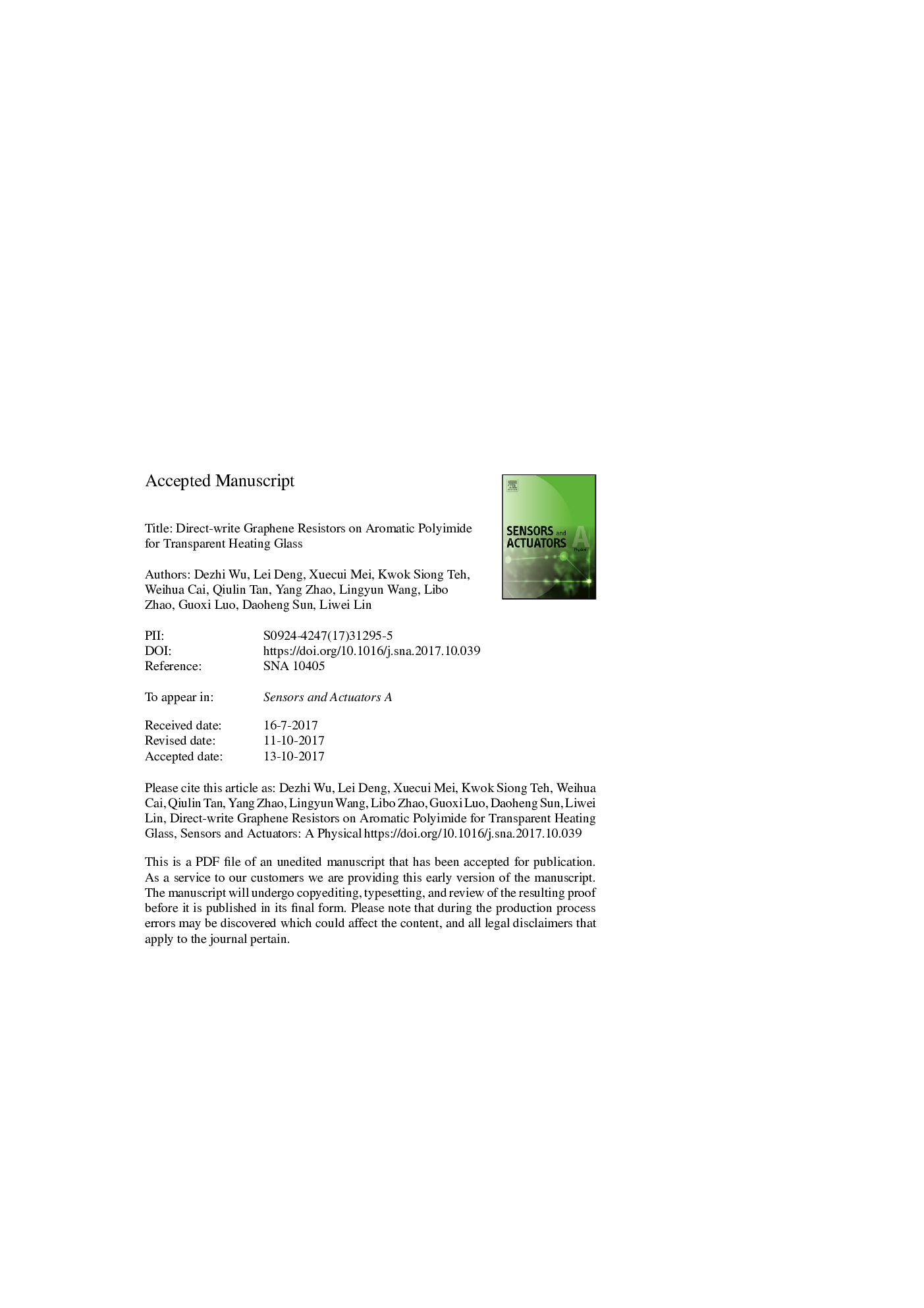| Article ID | Journal | Published Year | Pages | File Type |
|---|---|---|---|---|
| 7134154 | Sensors and Actuators A: Physical | 2017 | 18 Pages |
Abstract
This study reports a scalable process for the direct-write graphene resistors via a CO2 laser to irradiate a spin-coated aromatic polyimide (PI) thin film on top of the glass substrate. With the help of an XY stage, the resistor patterns can be controlled and designed as transparent heaters. Material characterizations by using Raman, SEM, TEM, XRD and AFM have been performed to verify the functional structures. The laser power density has been optimized as 7.27 kw/cm2 with the scanning speed of 1.6 mm/s to achieve the best resistivity value of ca. 2.833 Ã 10â4 Ω·m for the graphene structures. The effects on the scanning speed and the pulse width to the resulting graphene resistor patterns such as line widths have also been investigated for optimized direct-write process. When the scanning speed and the pulse width were set to 1.6 mm/s and 357 μs respectively, the mean line width was about 120 μm. Experimentally, such laser irradiated graphene was demonstrated to be used as electric transparent heating glass, and different line width and gap have great influence on the heating temperature, heat distribution and transmittance. When the line width and gap distance were 120 μm and 2 mm on a 4 Ã 4 cm2 cover glass respectively, the heater can produce a temperature of 92 °C on the glass substrate in one minute.
Related Topics
Physical Sciences and Engineering
Chemistry
Electrochemistry
Authors
Dezhi Wu, Lei Deng, Xuecui Mei, Kwok Siong Teh, Weihua Cai, Qiulin Tan, Yang Zhao, Lingyun Wang, Libo Zhao, Guoxi Luo, Daoheng Sun, Liwei Lin,
